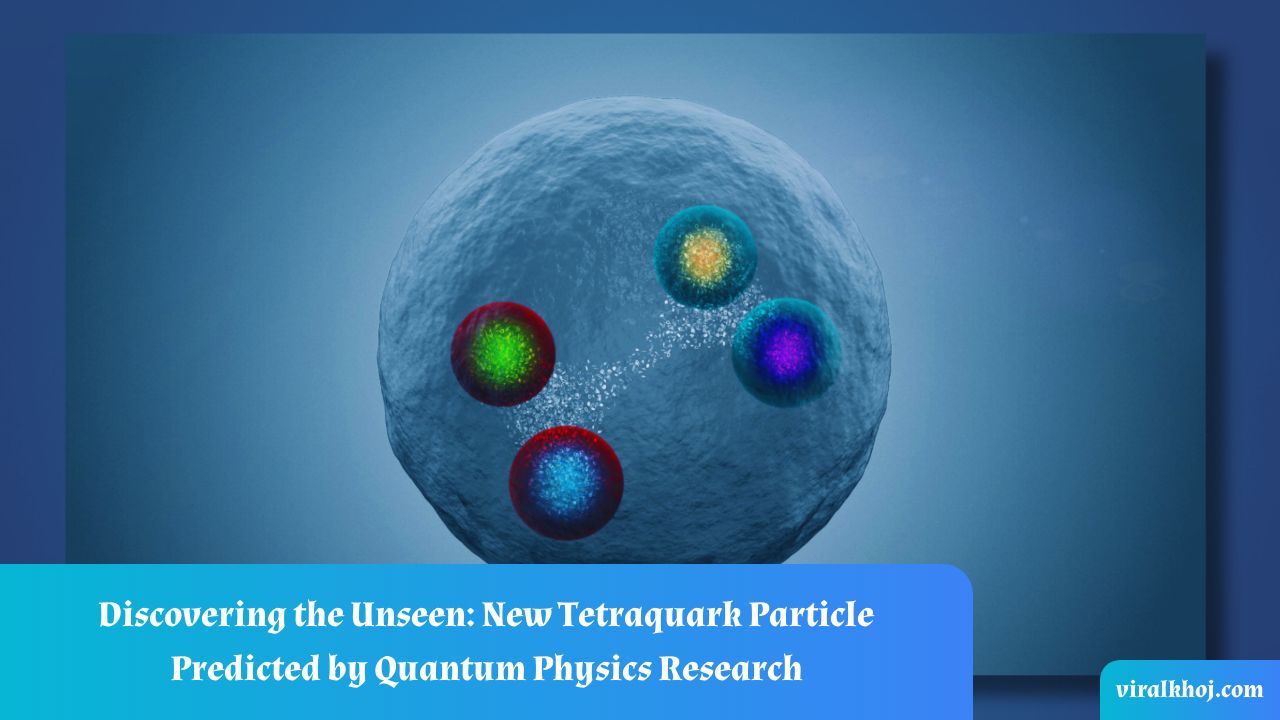Quantum Physics Unveils New Tetraquark Particle: A Groundbreaking Discovery

Quantum Physics Unveils New Tetraquark Particle: A Groundbreaking Discovery
Human beings have always been driven by a deep curiosity to understand the fundamental workings of the universe. Over the years, quantum physics has played a pivotal role in unraveling the intricate complexities of our world at microscopic scales and beyond. It has revolutionized our understanding of atoms, revealing that they are not the ultimate constituents of matter, but rather composed of smaller subatomic particles like protons, neutrons, and electrons.
However, recent groundbreaking research in quantum physics conducted by the Tata Institute of Fundamental Research (TIFR) and the Institute of Mathematical Science (IMSc) has taken us even further in our quest for knowledge. In a study published in the Physical Review Letters, scientists have made significant strides in the field of Quantum Chromodynamics (QCD), shedding light on exotic subatomic particles and advancing our understanding of the strong force.
The Strong Force: The Source of Mass in the Universe
At the heart of this research lies the mysterious fundamental force known as the strong force. This force is responsible for generating almost all the mass of visible matter in the universe. It operates through the interactions of a group of particles called quarks, which exchange particles called gluons. These interactions give rise to composite subatomic particles that make up everything we see around us.
Conventionally, these composite particles have been divided into two primary groups: mesons and baryons. Mesons, like pions, consist of one quark and one anti-quark, while baryons, like protons, are made up of three quarks.
Exotic Hadrons: Pushing the Boundaries of Our Understanding
However, beyond these conventional particles, there exists a class of quarks known as exotic hadrons. These exotic hadrons include particles with four, five, or even six quarks, as well as those with gluons known as glueballs. One type of exotic hadron is the tetraquark, which consists of four quarks, specifically two quarks and two anti-quarks.
While scientists have made significant progress in understanding exotic hadrons, their exact structures remain a mystery. Recent experimental findings have revealed a diverse array of exotic hadrons, challenging our traditional views of the strong force and expanding our knowledge of subatomic particles.
The Novel Tetraquark: A Breakthrough Prediction
In their recent research, Prof. Nilmani Mathur, Dr. Archana Radhakrishnan, and Dr. M. Padmanath have predicted the existence of a novel tetraquark. This newly identified subatomic particle, known as Tbc or the beautiful-charming tetraquark, consists of a beauty quark, a charm quark, and two light anti-quarks.
Utilizing advanced computational resources, the researchers examined the interactions between bottom and charm mesons to understand the formation of this specific tetraquark. Their calculations strongly suggest the existence of this particle, which could potentially be discovered using existing experimental techniques.
Moreover, the predicted tetraquark has a higher binding energy than any previously discovered tetraquarks. As the mass of the light quark increases, the binding weakens, revealing intriguing features of the strong force and the dynamics of hadron formation involving heavy quarks.
Unlocking the Secrets of the Strong Force
This groundbreaking discovery not only adds to our understanding of the strong force but also motivates further exploration of heavier exotic subatomic particles in future experiments. These investigations have the potential to unlock the full potential of the strong force and deepen our comprehension of the fundamental workings of the universe.
As we delve deeper into the mysteries of quantum physics, we continue to uncover new insights into the fundamental nature of matter. The discovery of the novel tetraquark particle represents another significant step forward in our exploration of the microscopic world, pushing the boundaries of our knowledge and paving the way for even more remarkable discoveries in the future.


Revolutionizing Space Hygiene: Astronauts' Urine to Drinkable Water in Minutes
14 Jul 2024
The Historic Flights of Animal Astronauts: Pioneers in Space Exploration
08 Jul 2024
Chinese Lunar Probe Successfully Takes Off from Far Side of the Moon with Samples to be Returned to Earth
06 Jun 2024
Isro's Impact: From Discovering Water on the Moon to Fostering India's Space Tech Startups
27 May 2024
Spreading Quantum Entanglement Through City Networks: The Future of Quantum Internet
25 May 2024